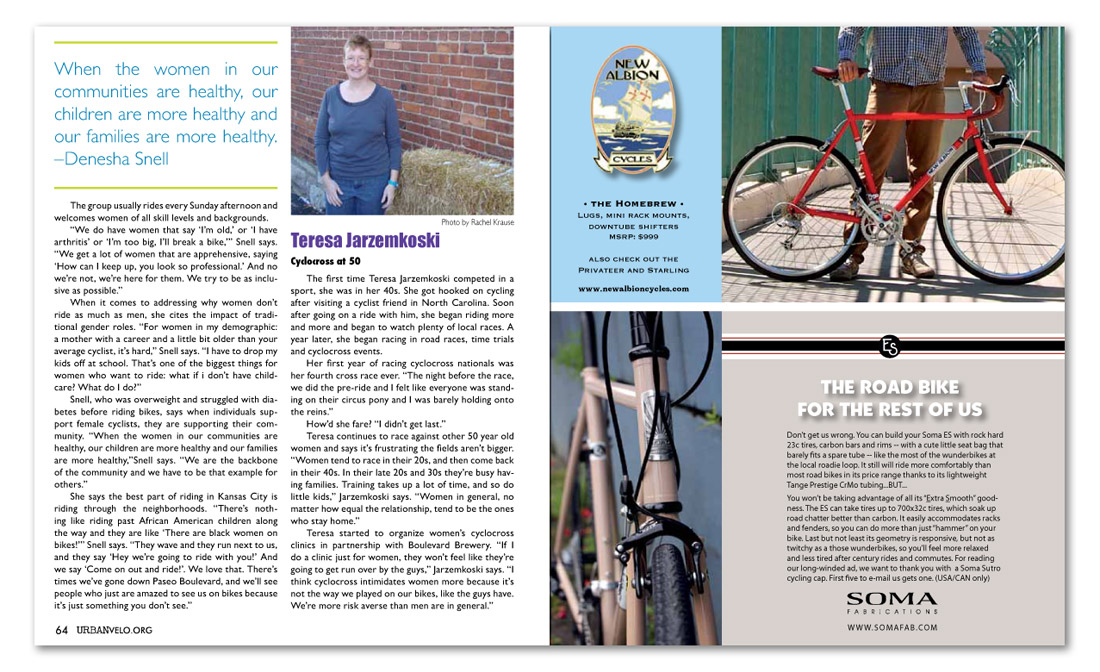


The group usually rides every Sunday afternoon and welcomes women of all skill levels and backgrounds.
“We do have women that say ‘I’m old,’ or ‘I have arthritis’ or ‘I’m too big, I’ll break a bike,’” Snell says. “We get a lot of women that are apprehensive, saying ‘How can I keep up, you look so professional.’ And no we’re not, we’re here for them. We try to be as inclusive as possible.”
When it comes to addressing why women don’t ride as much as men, she cites the impact of traditional gender roles. “For women in my demographic: a mother with a career and a little bit older than your average cyclist, it’s hard,” Snell says. “I have to drop my kids off at school. That’s one of the biggest things for women who want to ride: what if i don’t have childcare? What do I do?”
Snell, who was overweight and struggled with diabetes before riding bikes, says when individuals support female cyclists, they are supporting their community. “When the women in our communities are healthy, our children are more healthy and our families are more healthy,”Snell says. “We are the backbone of the community and we have to be that example for others.”
She says the best part of riding in Kansas City is riding through the neighborhoods. “There’s nothing like riding past African American children along the way and they are like ‘There are black women on bikes!’” Snell says. “They wave and they run next to us, and they say ‘Hey we’re going to ride with you!’ And we say ‘Come on out and ride!’. We love that. There’s times we’ve gone down Paseo Boulevard, and we’ll see people who just are amazed to see us on bikes because it’s just something you don’t see.”
Teresa Jarzemkoski
Cyclocross at 50
The first time Teresa Jarzemkoski competed in a sport, she was in her 40s. She got hooked on cycling after visiting a cyclist friend in North Carolina. Soon after going on a ride with him, she began riding more and more and began to watch plenty of local races. A year later, she began racing in road races, time trials and cyclocross events.
Her first year of racing cyclocross nationals was her fourth cross race ever. “The night before the race, we did the pre-ride and I felt like everyone was standing on their circus pony and I was barely holding onto the reins.”
How’d she fare? “I didn’t get last.”
Teresa continues to race against other 50 year old women and says it’s frustrating the fields aren’t bigger. “Women tend to race in their 20s, and then come back in their 40s. In their late 20s and 30s they’re busy having families. Training takes up a lot of time, and so do little kids,” Jarzemkoski says. “Women in general, no matter how equal the relationship, tend to be the ones who stay home.”
Teresa started to organize women’s cyclocross clinics in partnership with Boulevard Brewery. “If I do a clinic just for women, they won’t feel like they’re going to get run over by the guys,” Jarzemkoski says. “I think cyclocross intimidates women more because it’s not the way we played on our bikes, like the guys have. We’re more risk averse than men are in general.”